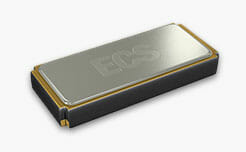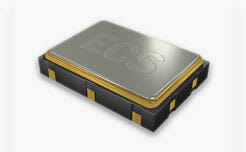
In this Quartz Resonators series video, we explore the concept of Frequency Tolerance and Frequency Stability.
To understand Tolerance and Stability we must first look at the quartz itself because the density and structure of Quartz varies with temperature. Frequency deviations occur as the temperature changes. By cutting the quartz at different angles you can optimize the Quartz blank to perform better in a specific application. For some of today’s most stringent applications that require high stability and wide temp ranges we would use an AT cut Crystal blank.
The Frequency Tolerance of a crystal is defined as the allowable deviation from the specified Frequency when measured at 25°C or room temperature.
The Frequency Stability is defined as the allowable deviation over the rated temperature range. Typically -40° ~ +85°C.
Something to remember is that Tolerance and Stability are cumulative when managing your accuracy budget. They are typically expressed in parts per million or sometimes as a percentage of the frequency.
For instance, a crystal may be specified as having a frequency Tolerance of ±50 PPM at 25°C and a frequency Stability of ±50 PPM over a specified operating temperature. This would give the crystal an overall stability and tolerance budget of ±100 PPM or 0.01% potential frequency error.
Watch the above video to learn more about Frequency Tolerance & Stability then click on the button below to start searching for the exact part you need!

Crystals

Oscillators

Power Inductors

ECSpressCON
Please contact us if you need additional information or have a specific requirement in your application.
ECS, Inc. International
15351 West 109th Street
Lenexa, KS 66219
Tel: 913-782-7787
Toll Free: 1-800-237-1041
Fax: 913-782-6991
Frequency Tolerance & Stability was last modified: June 30th, 2022 by